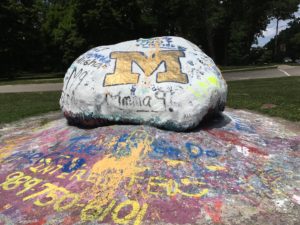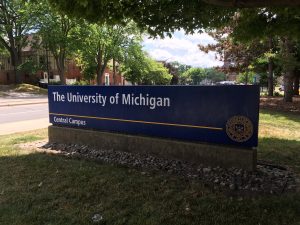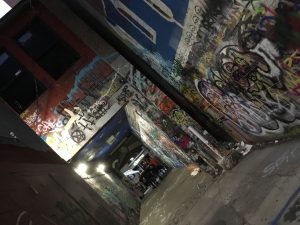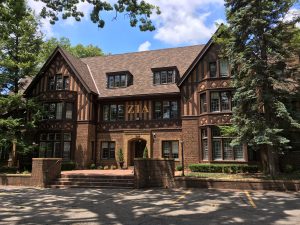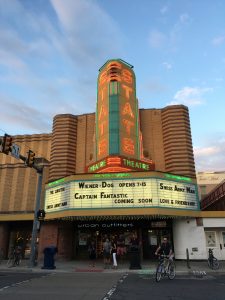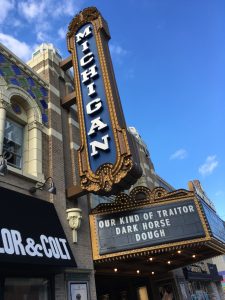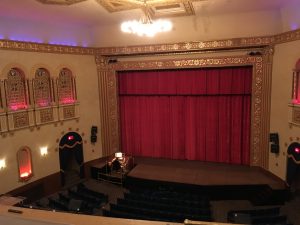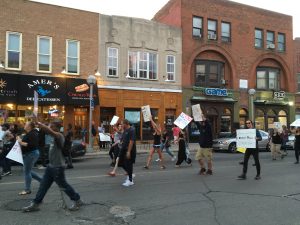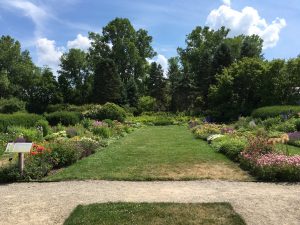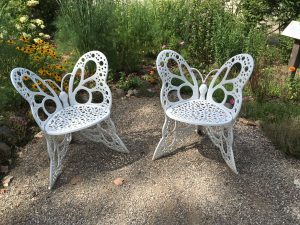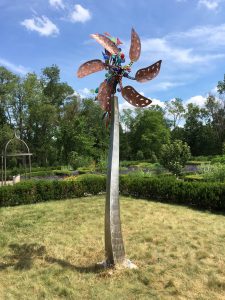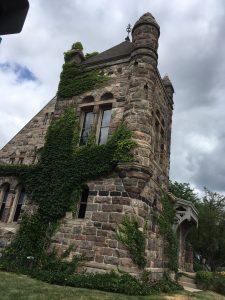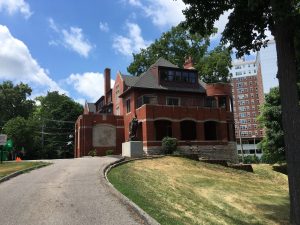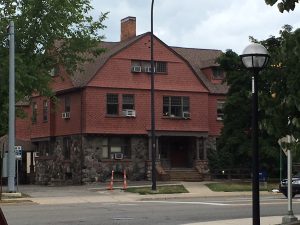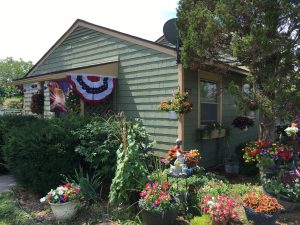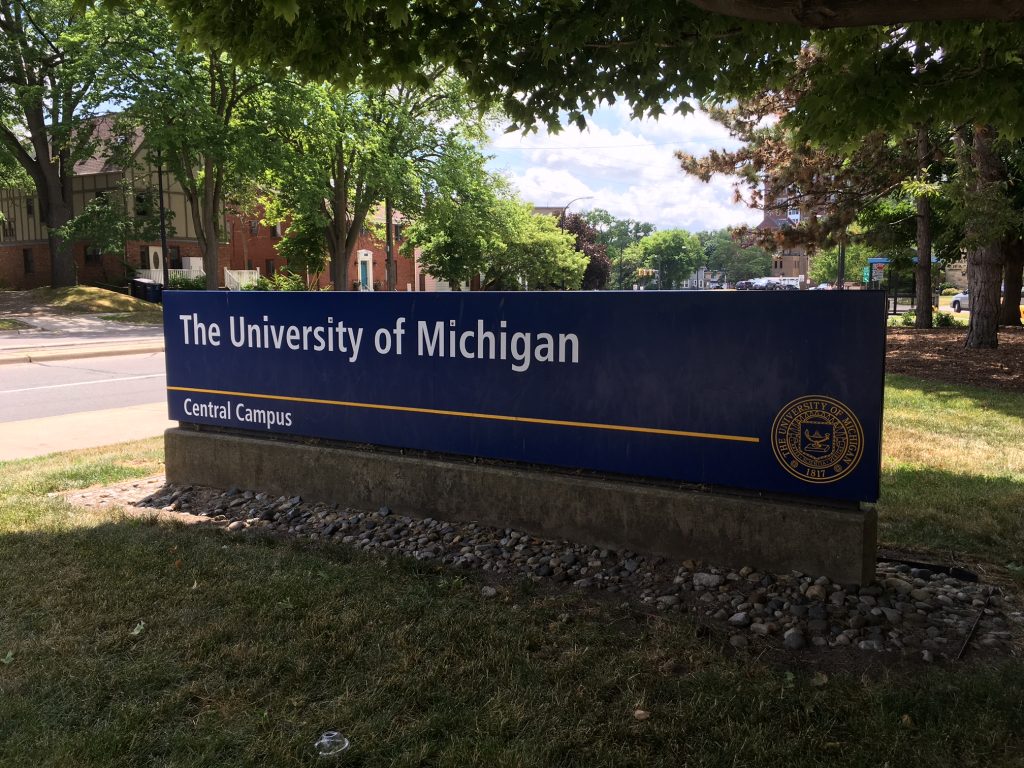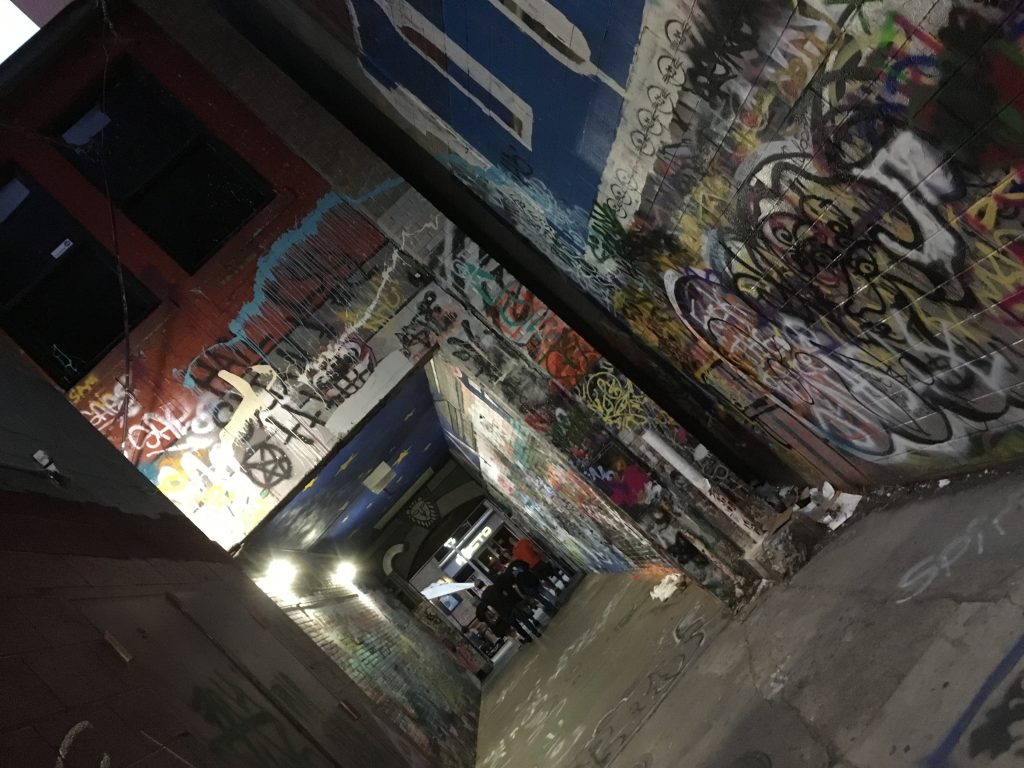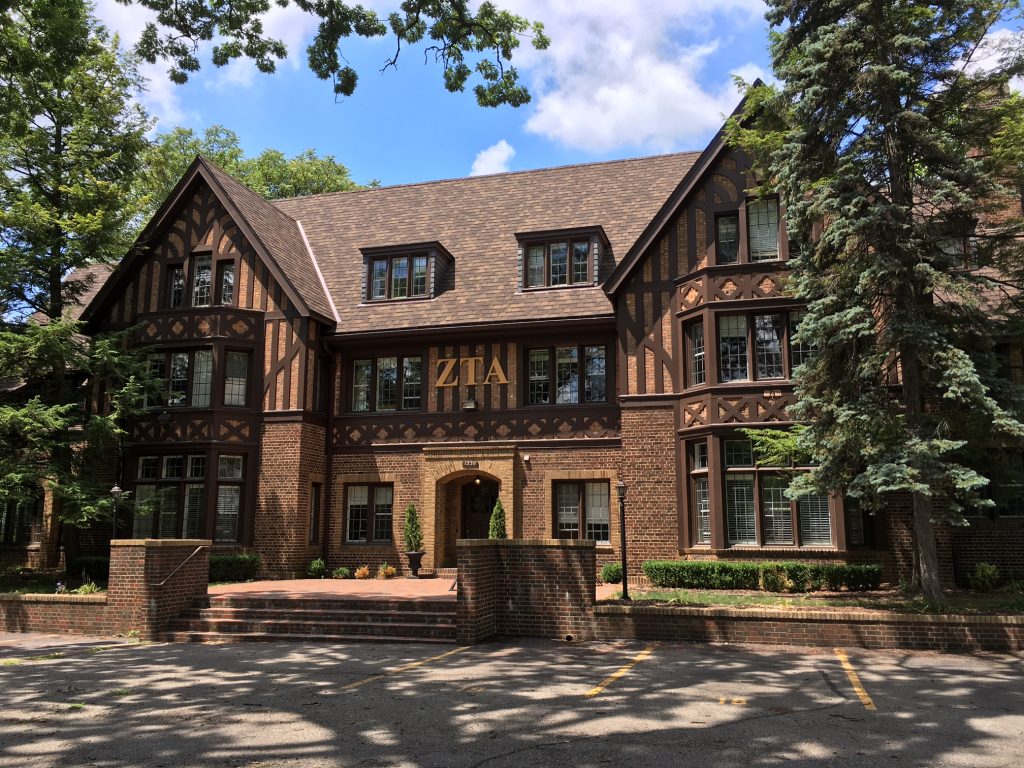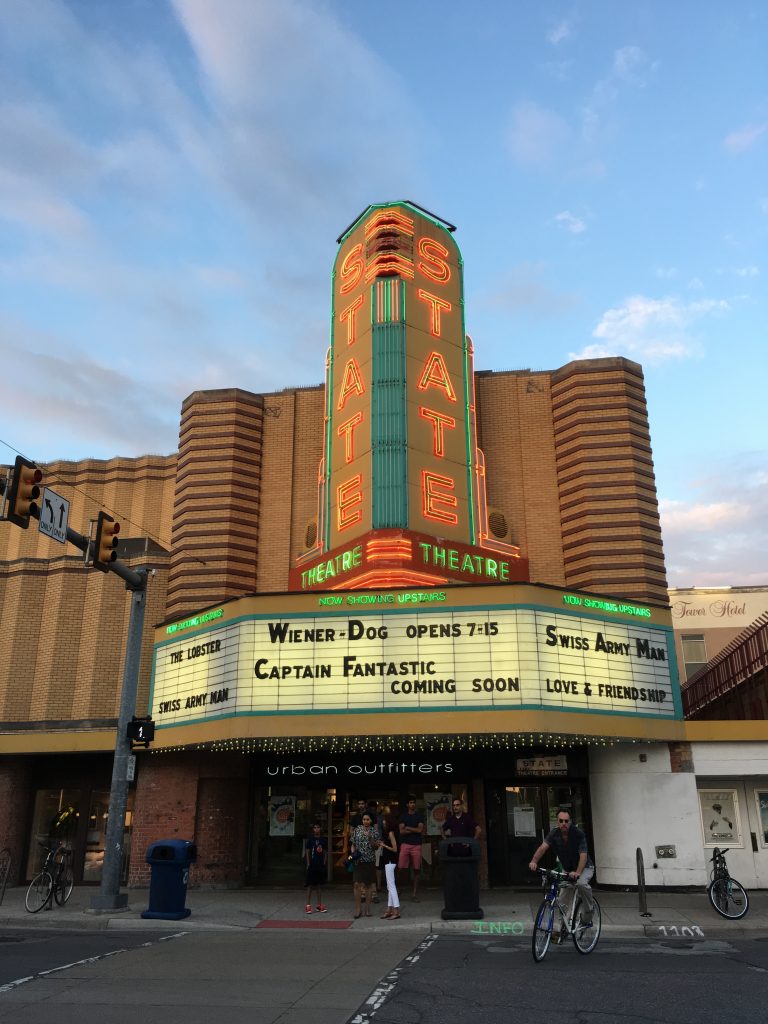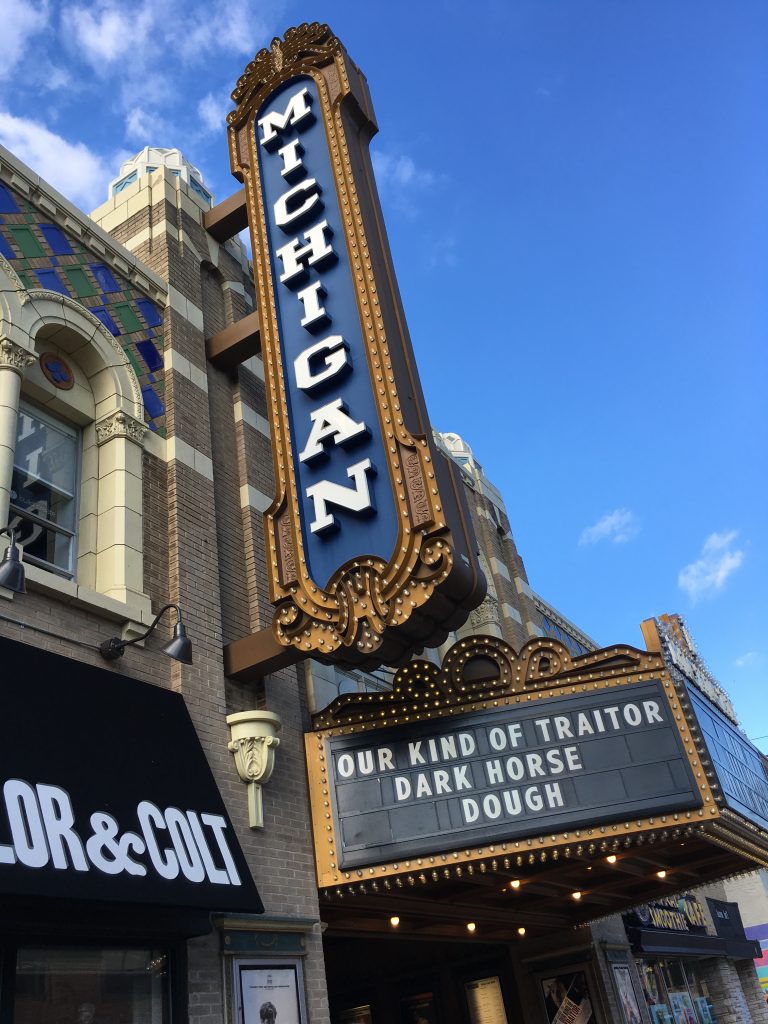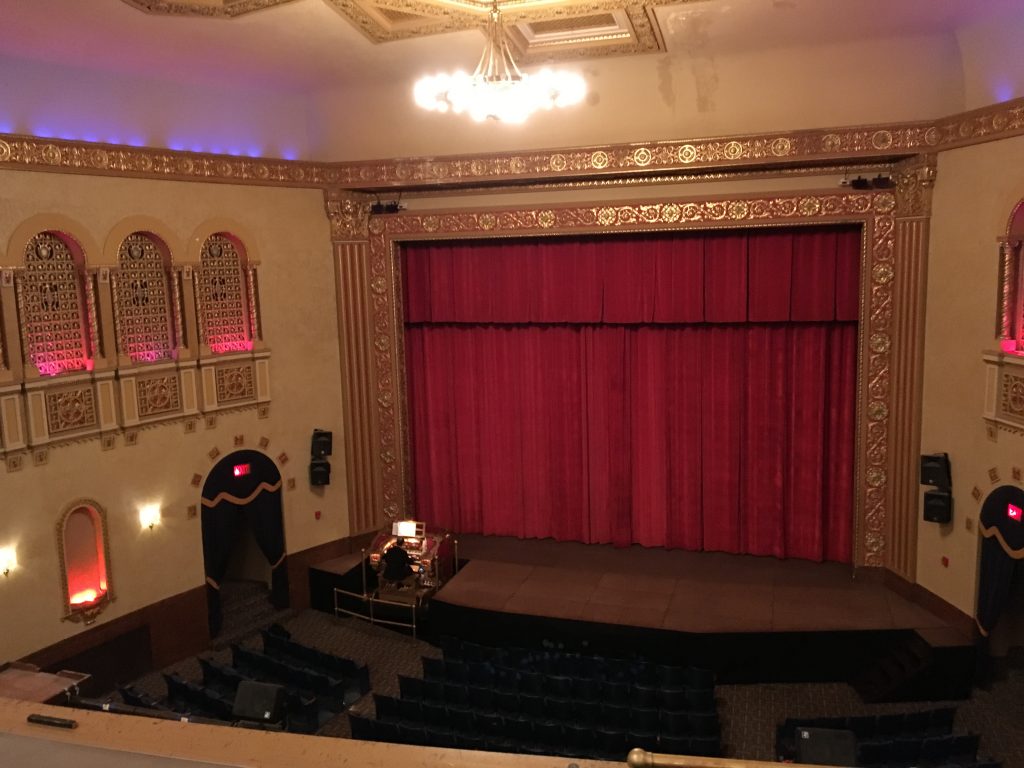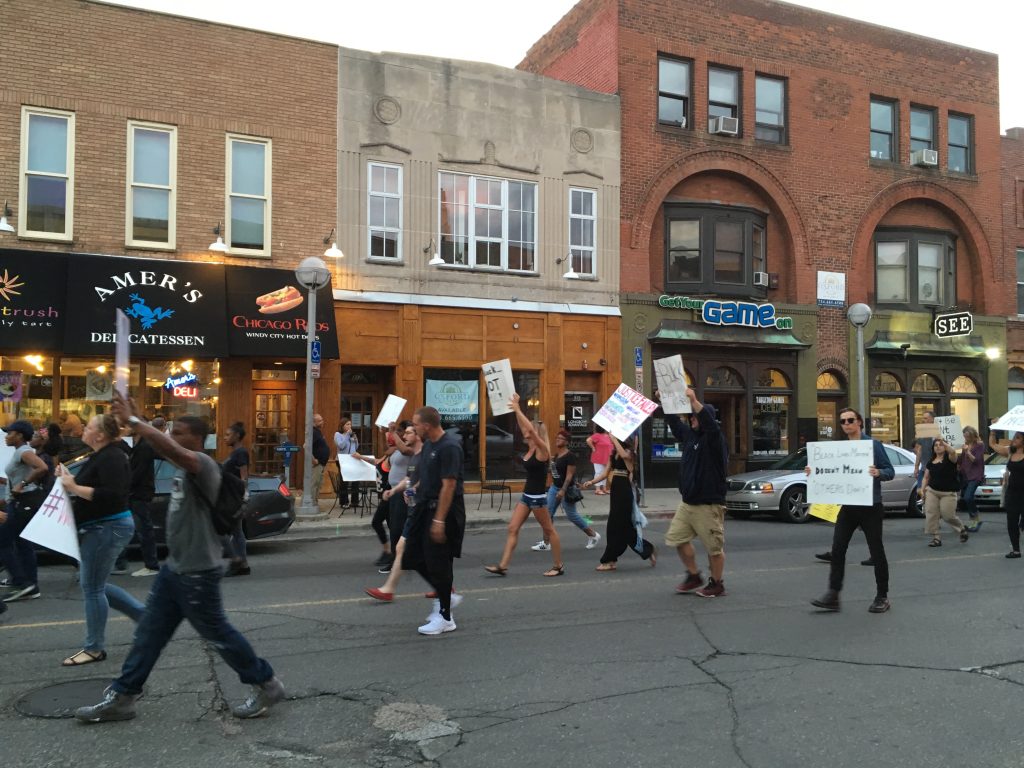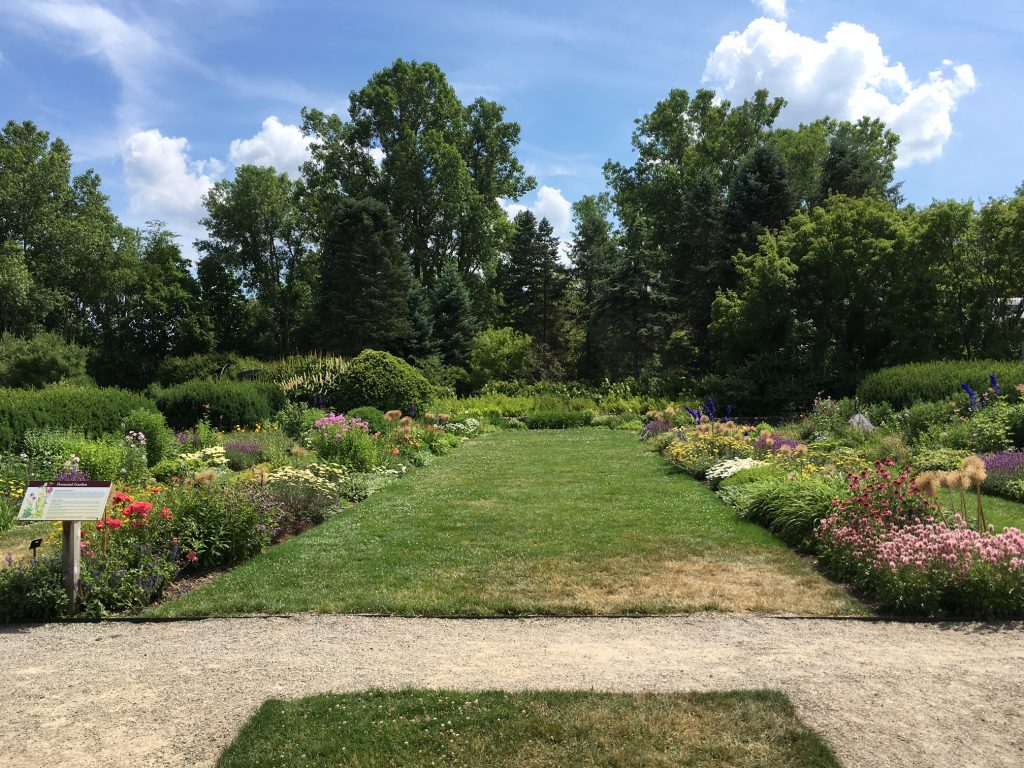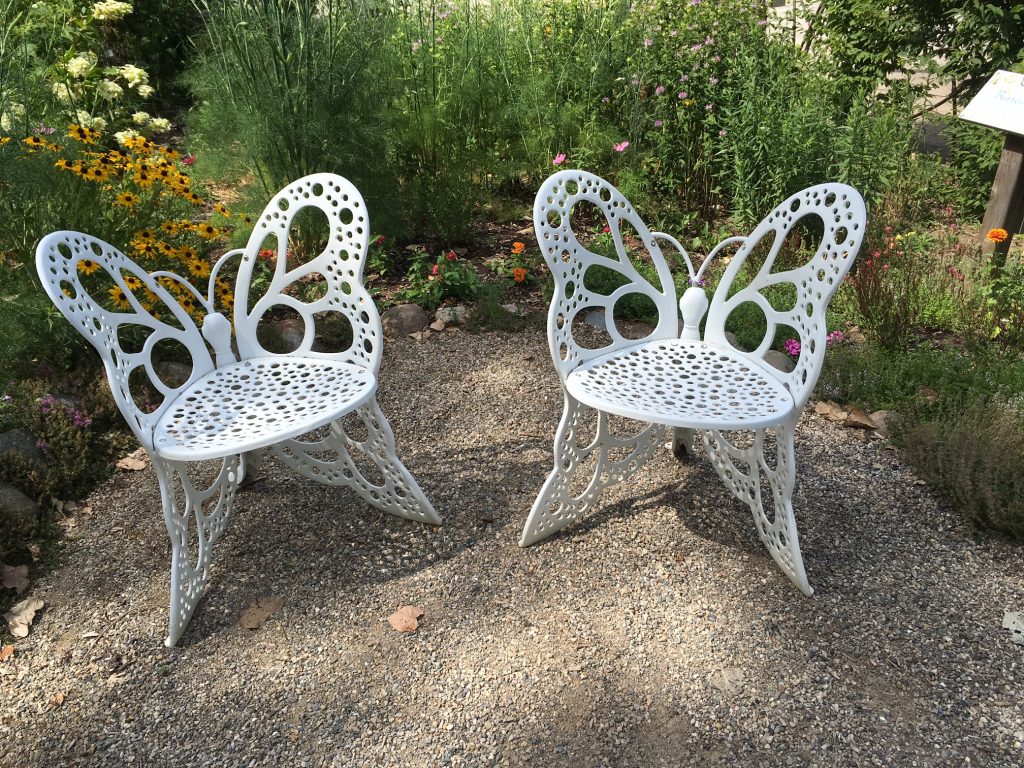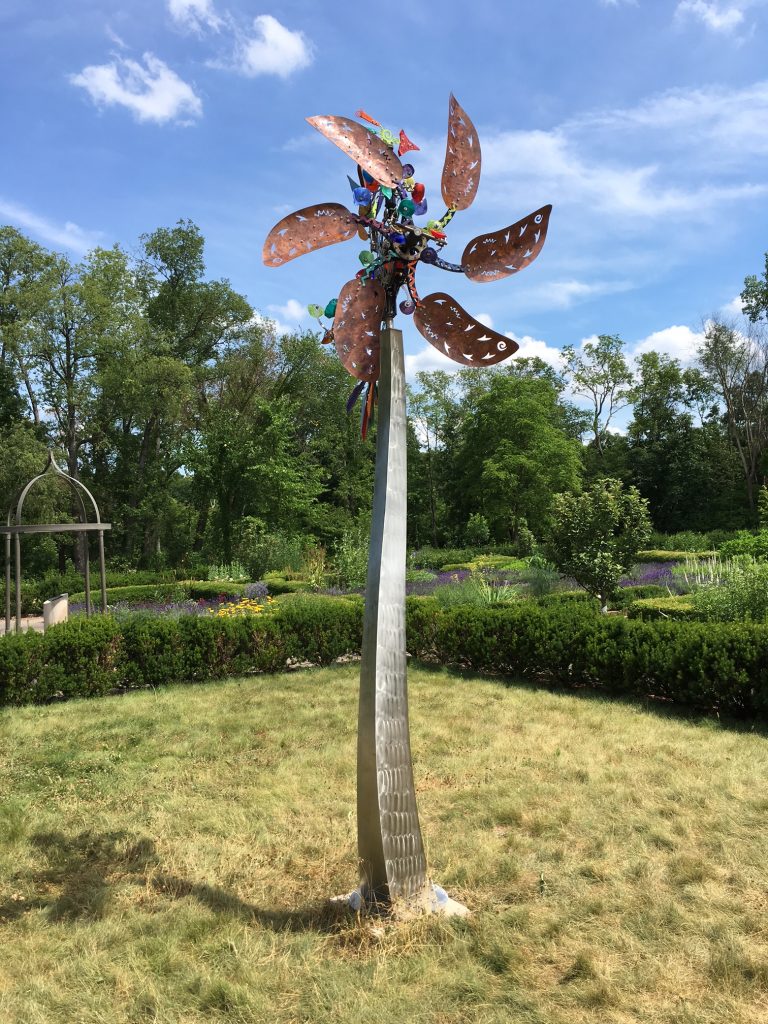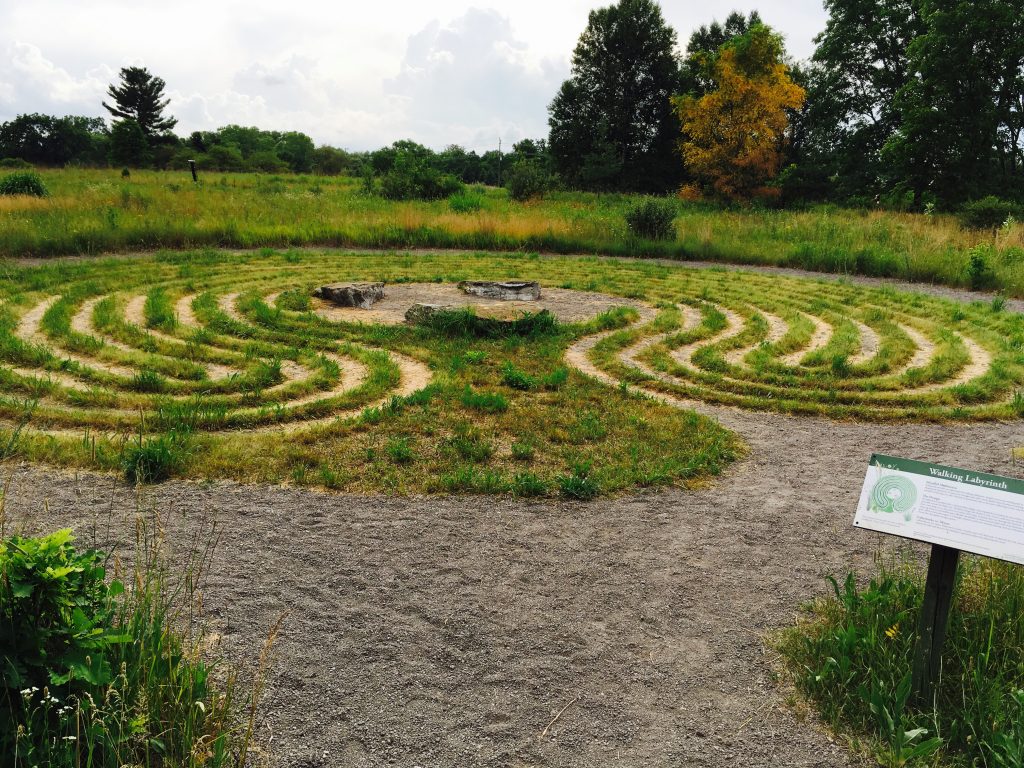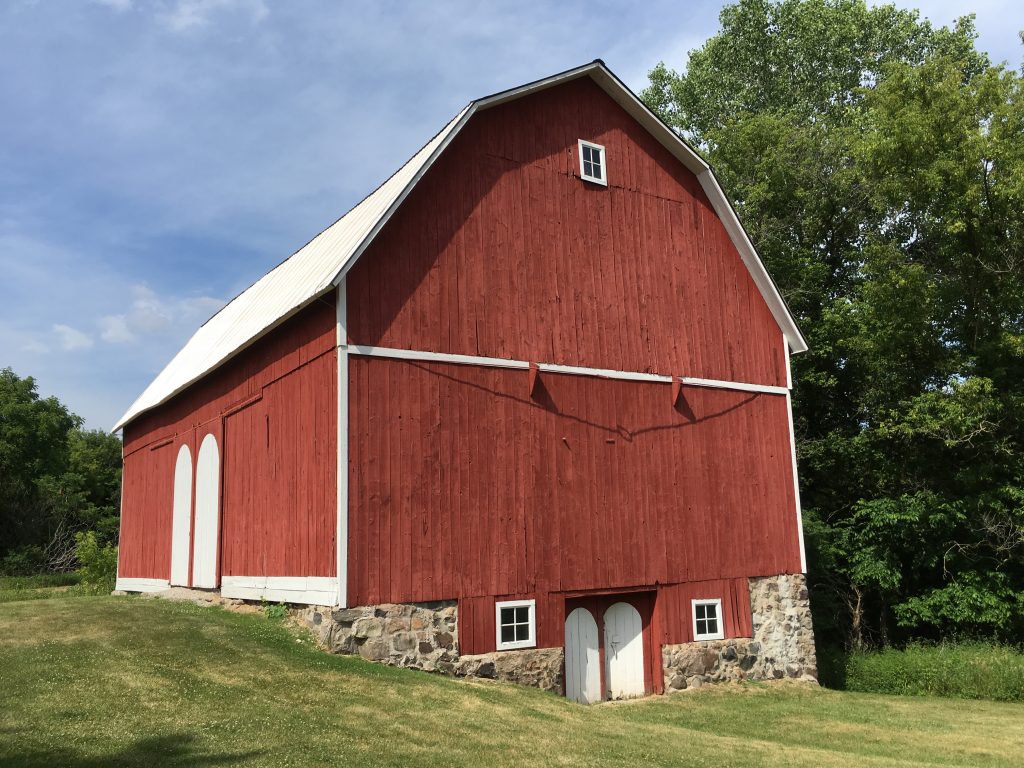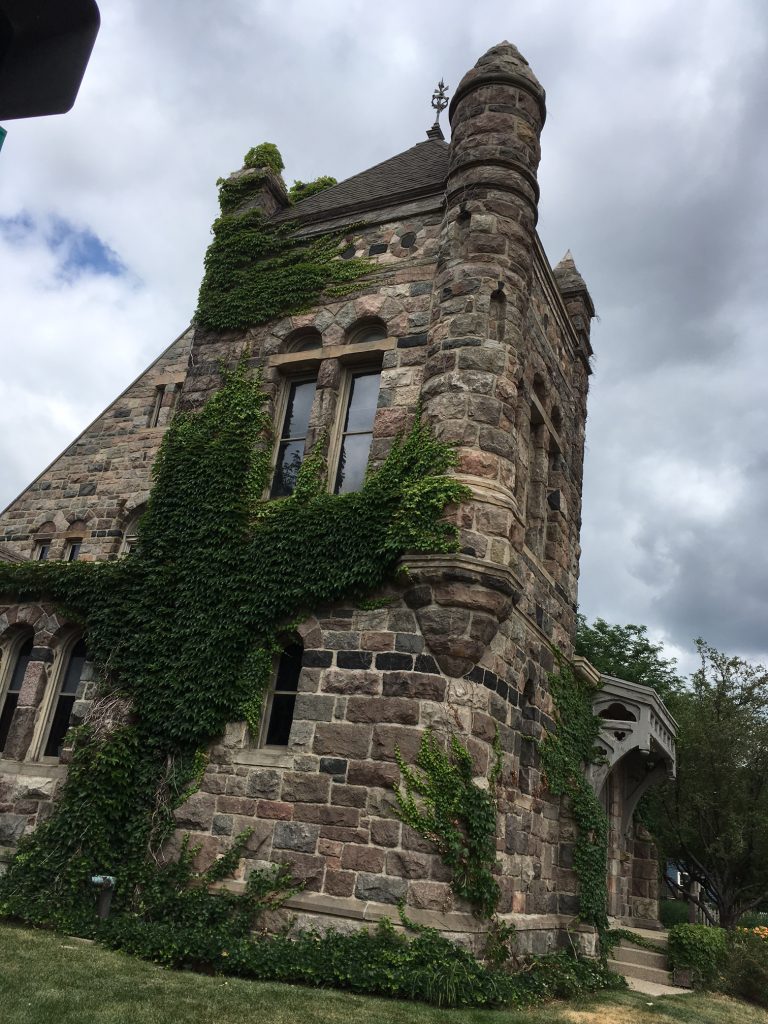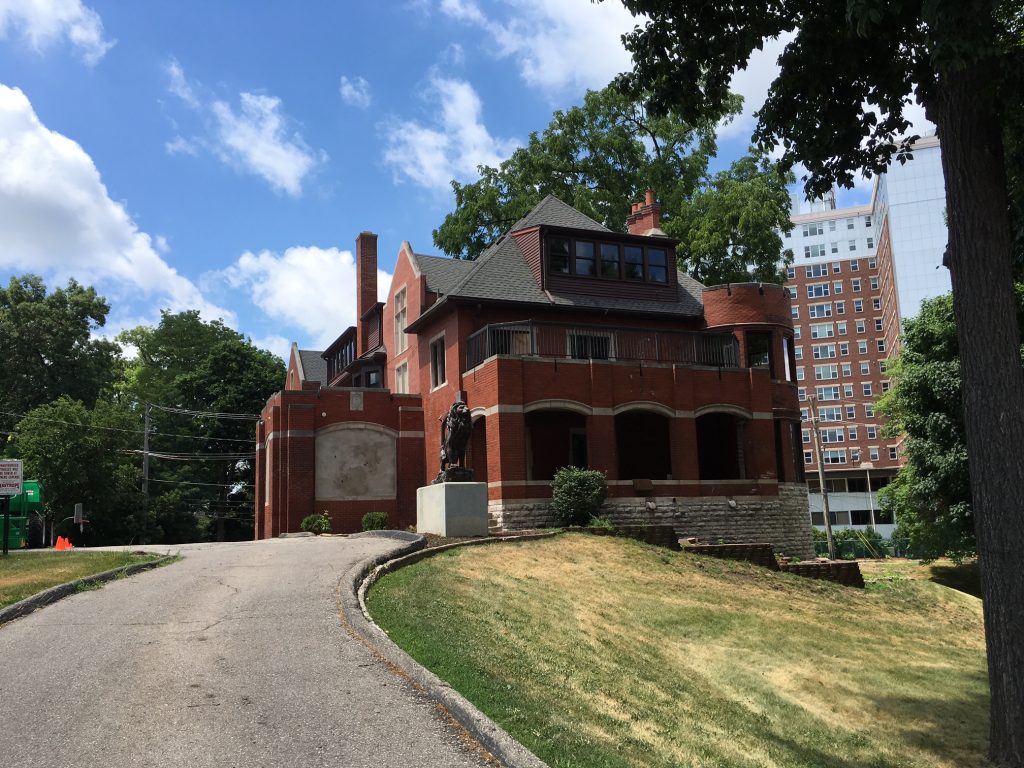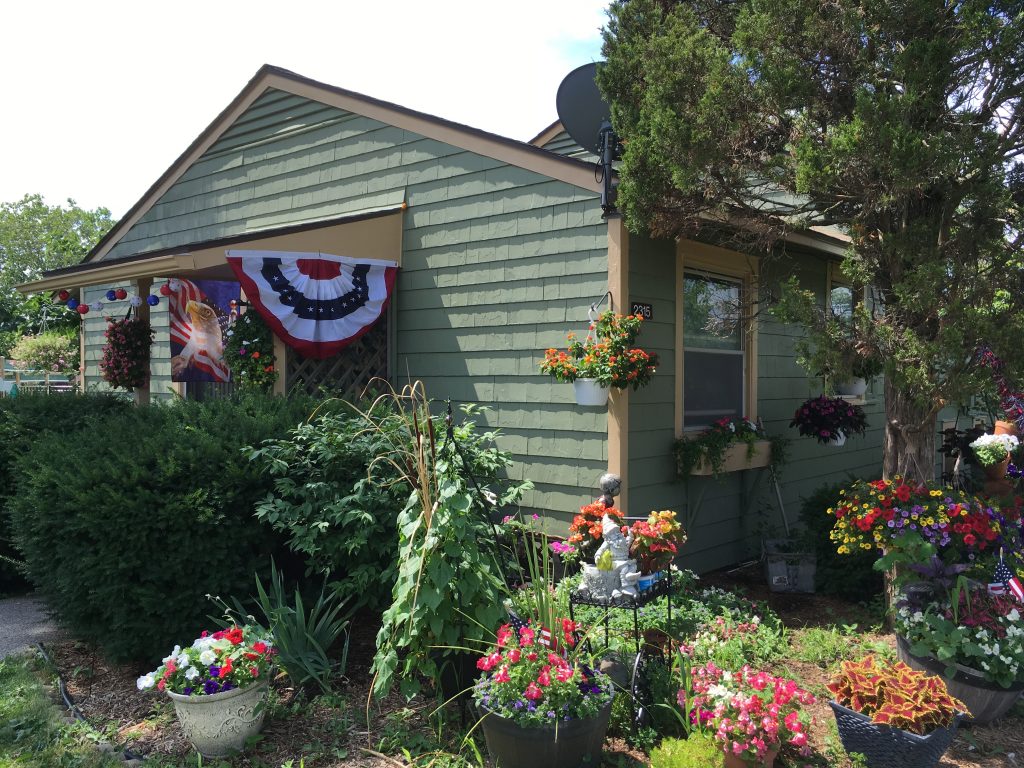“The Rock” of the University of Michigan, Ann Arbor, which students paint. It was placed at that spot in 1932.
This is the third story in a four-part series of artist and activist Sarah Gish’s diary, a veritable Thelma and Louise adventure, without Louise. She reflects on her solo female road trip from Houston to the Midwest, made over the summer, for her Ignite Your Life! art project. Amidst a fraught election year, Gish drove thousands of miles in search of the real America. Here’s what she found…
After many miles and three days, I finally made it to my destination: Ann Arbor, Michigan — my birthplace. I had been curious about this city my entire life and now, as if in a dream, here I was. It was small and charming and a university town that reminded me a bit of Chapel Hill, North Carolina mixed in with Princeton, New Jersey.
My parents were Californians who moved to Ann Arbor for my dad’s first job as a German professor at the University of Michigan. We ended up in Texas because the chilly Michigan snow drove them to find warmer climes.
I discovered that Ann Arbor is a terrific place to be born. It’s No. 8 on a recent ranking of “America’s Least Stressed Cities” and it ranks first among U.S. cities in the number of booksellers and books sold per capita.
Interestingly, Ann Arbor and my hometown of Houston were both founded by men whose last name is Allen and hail from New York. German immigrants came to Ann Arbor in droves, as did escapees from the Great Irish Famine (1845-1849). I’m half German, half Irish, so this bit of the town’s history really resonated with me. And so did this piece of the city’s history: during World War I, local Germans became targets of animosity because of their alleged sympathy for the German state, and four professors in the University of Michigan’s German department were dismissed because of what was alleged by the regents to be an “excess” of faculty in that department.
Presumably, in the 1960s when dad taught there, German was an acceptable subject again.
I have two touchstones for my travels: historic movie theaters and labyrinths. I used to run the Landmark River Oaks Theatre in Houston that was built in 1939 and that I lobbied to save in 2007, so I have a soft spot for old, beautiful buildings. And labyrinths are my medicine for life. I love to walk them when I’m stressed and I love to explore their designs, often in the shape of mandalas. I lead community labyrinth walks in Houston whenever I can.
The first place I visited in Ann Arbor was the Matthaei Botanical Gardens and Nichols Arboretum because I had heard that there was a labyrinth there. It was a delightful place that was designed by Alden B. Dow, an apprentice of Frank Lloyd Wright’s. Winding past one deer, a red farmhouse, and two cute butterfly chairs in the children’s garden, I finally found the labyrinth.
It was enclosed in a grassy area a bit out of the way and easy to miss. As I stood taking it in, I was reminded of my favorite Roald Dahl quote: “And above all, watch with glittering eyes the whole world around you because the greatest secrets are always hidden in the most unlikely places. Those who don’t believe in magic will never find it.”
I enjoyed a walk on the labyrinth’s meandering path and then I laid down to take in the sky and the clouds and the reality that I was finally in the city where I was born. Thankfully, the rattlesnakes that were purported to be in the grasses never found me.
One of the main reasons I timed my trip as I did was to participate in the Rolling Sculptures Car Show in downtown Ann Arbor, an annual event. I visualized it as something like the Houston Art Car Parade but instead, it was a parked showcase of classic cars. The vintage cars were gorgeous but I yearned for another art car artist like me. I finally met Will Dorr, creator of the Truck Hearse, and all was well.
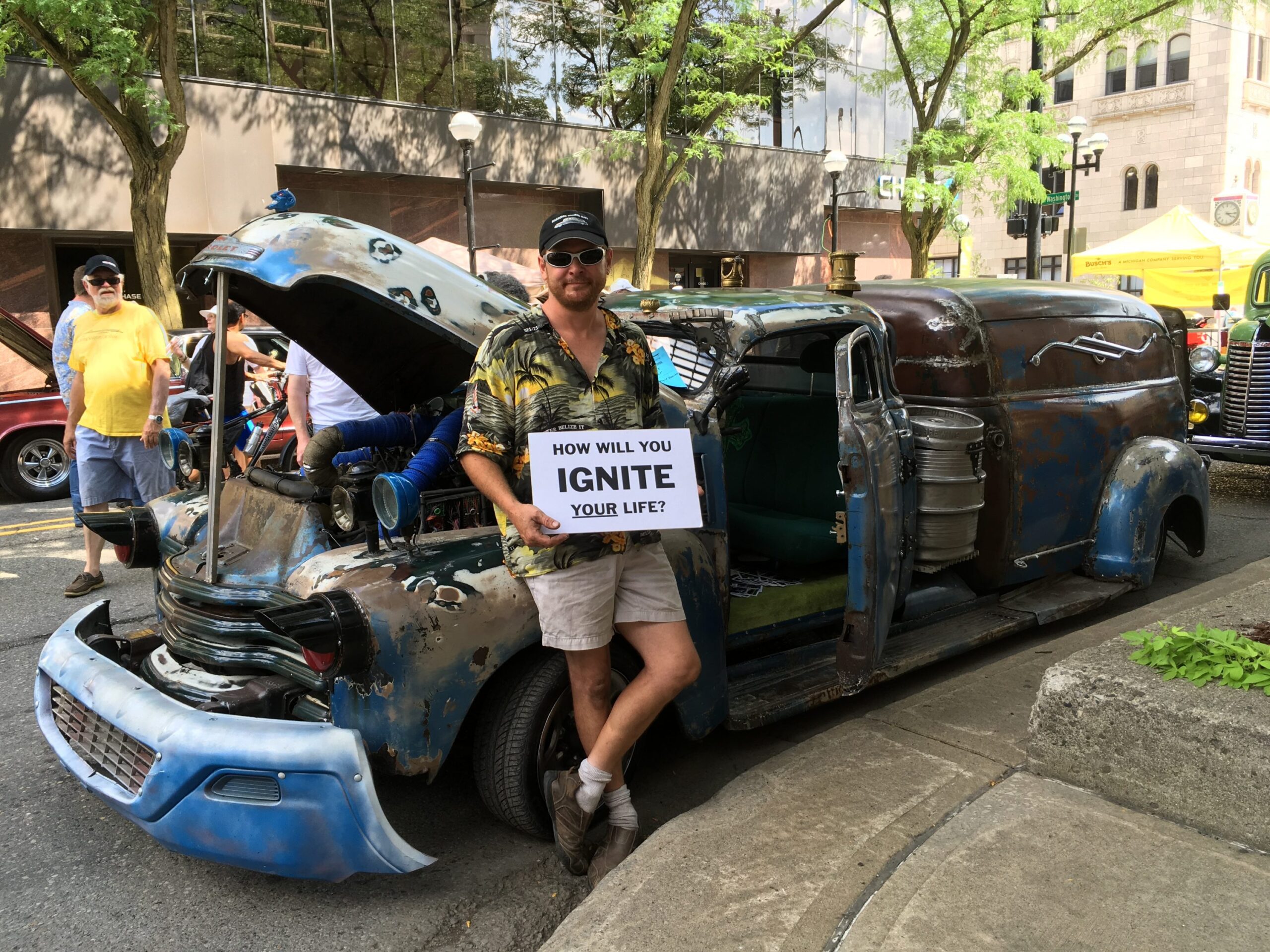
I stumbled upon a “Black Lives Matter” rally in downtown Ann Arbor whose marchers conveyed a sense of loud determination in the wake of the deaths of African-Americans Philando Castile and Alton Sterling. What struck me about that scene was the way in which the police deftly maneuvered the marchers around the watching crowd without a problem. This was one day after the shootings at a Dallas BLM rally and the security was so well-orchestrated. I was impressed.
Turning my attention back to the historic downtown district, I visited the area’s two movie palaces. The Michigan Theater, built in 1927, is on the U.S. National Register of Historic Places and still shows movies with an organist playing before the busier shows. It has been remodeled back to its original design for millions and is run by a self-sustaining nonprofit, The Michigan Theater Foundation, that offers all kinds of benefits to members and that maintains the theater.
Five minutes away, the 1942 State Theatre also shows movies but an Urban Outfitters occupies its ground floor, demonstrating a happy marriage between retail and historic preservation. The State is also owned by The Michigan Theater Foundation, which is closing it this fall to embark on an estimated year-long renovation project while the cash registers will still ring at the store. The plan is to make the State as stately as the Michigan.
My final stop in Ann Arbor was the place my parents lived when I was a baby. I had seen it in pictures and I had visualized it in my dreams. With much anticipation, I rolled up to the street and knocked on the door. A disheveled but sweet man named Chuck answered the door. I announced that I was there to see the home where my parents lived from 1961 to1963 and was wondering if he would let me in to see it.
He didn’t mind but told me the place was a mess. I couldn’t see the mess because I was so excited! What I saw was the mini three-story place I had heard all about from my mom — the tiny kitchen and basement (something foreign to me as a Texan) and the grounds where the University of Michigan professors’ kids played. I could imagine my young parents hanging out there, my 2-year-old brother running around with my Dad, and me in my Mom’s arms as a baby. I pondered the irony of going on a long road trip for an art project that was dedicated to my brother and ending up on the lawn where he first learned to play.
They say that you can never go home again but I say that you can go to your birthplace again. It will ignite your life and you’ll never be the same.
I was moved to many tears on this trip and I felt like a piece of the puzzle that is me was finally back in place.
For the concluding chapter, and the bookend to this trek, check back for Gish’s historic journey to D.C. for the Women’s March.
